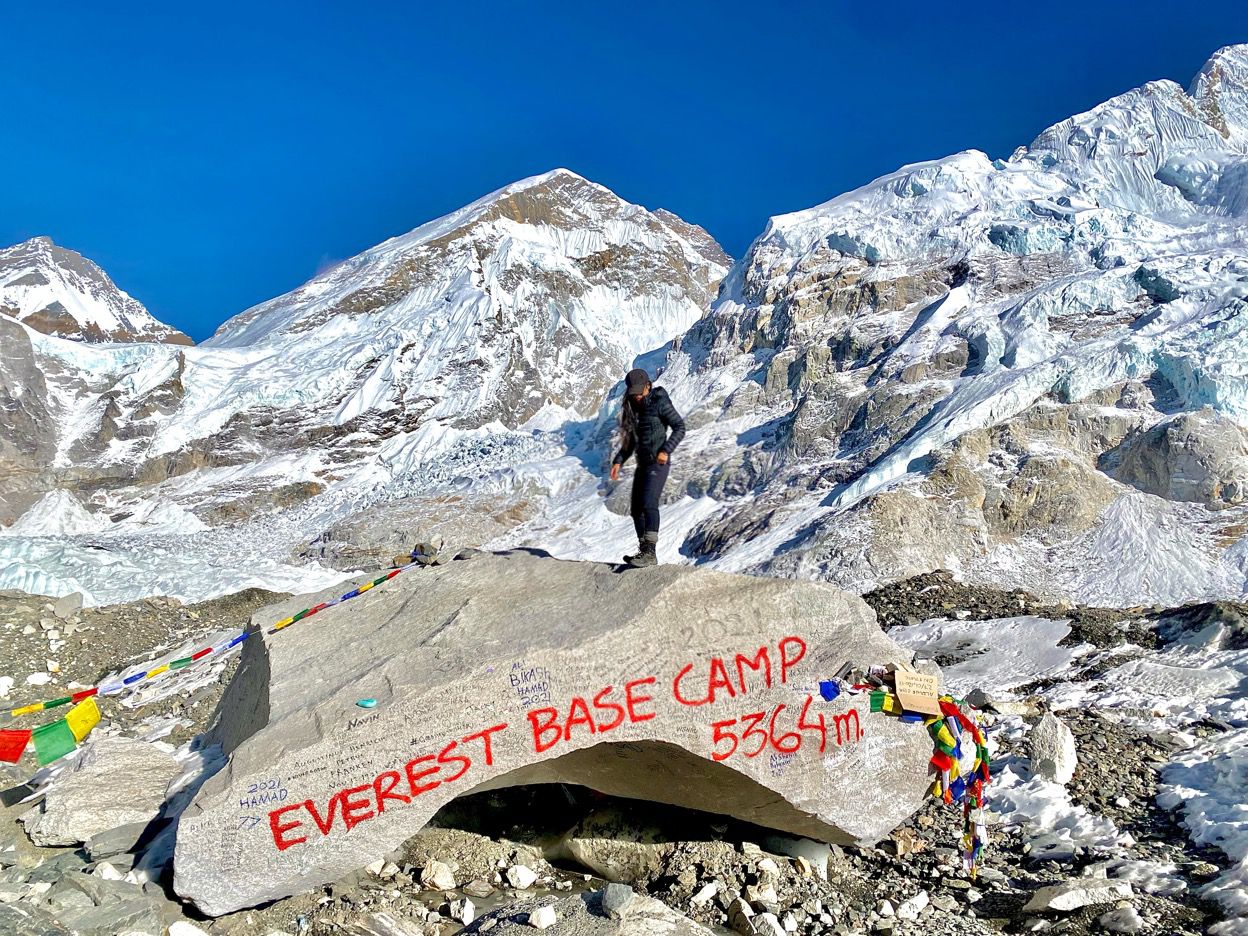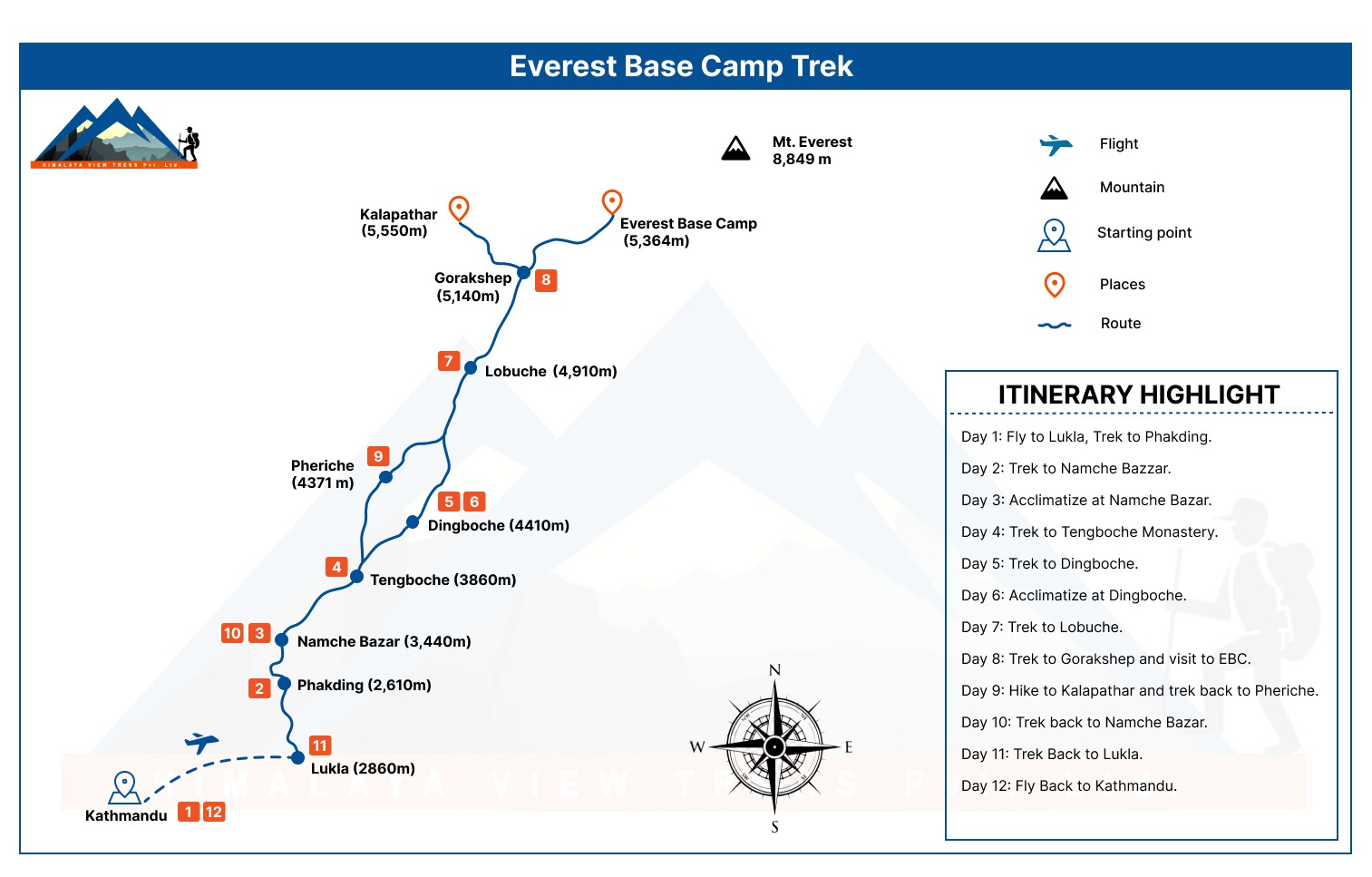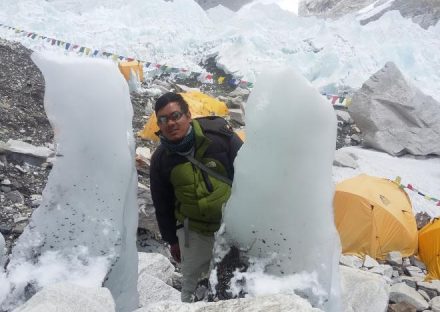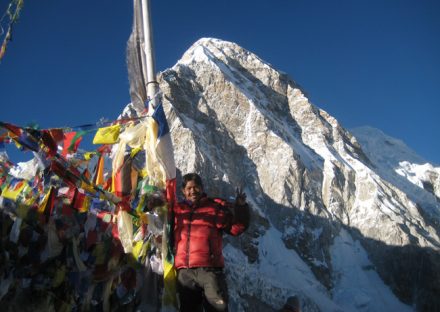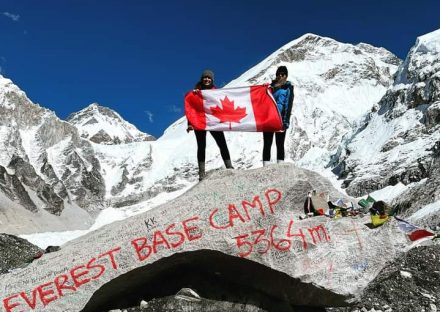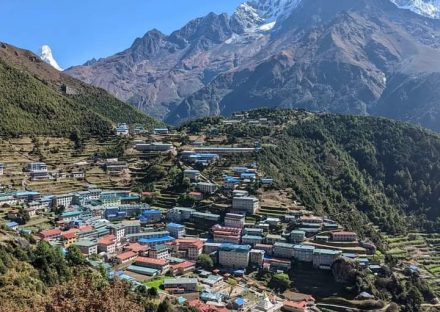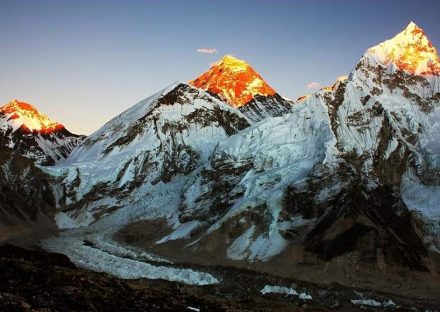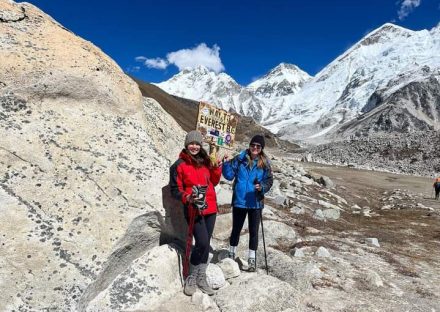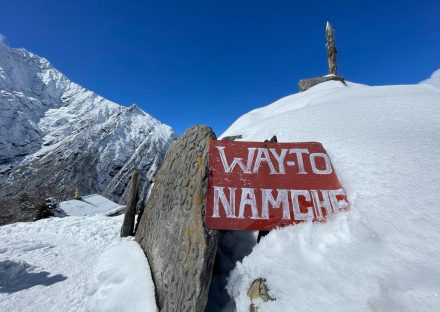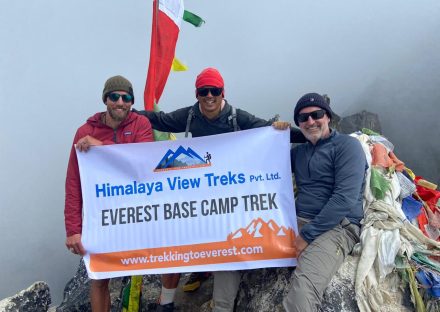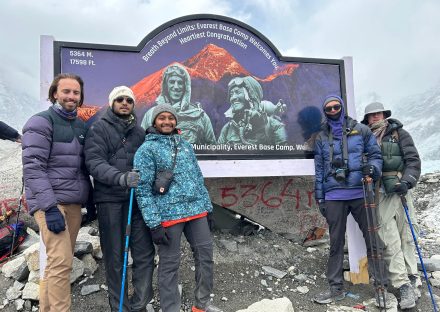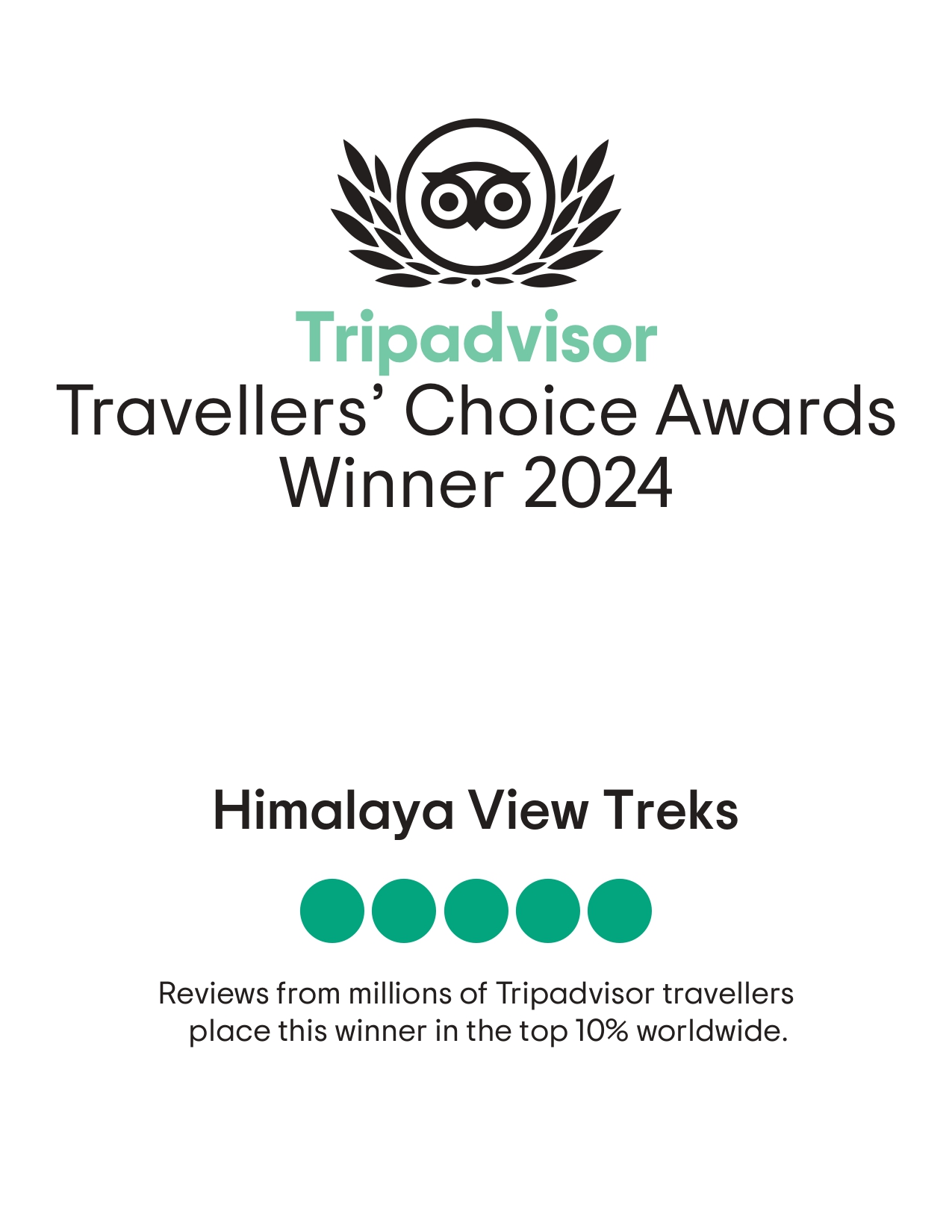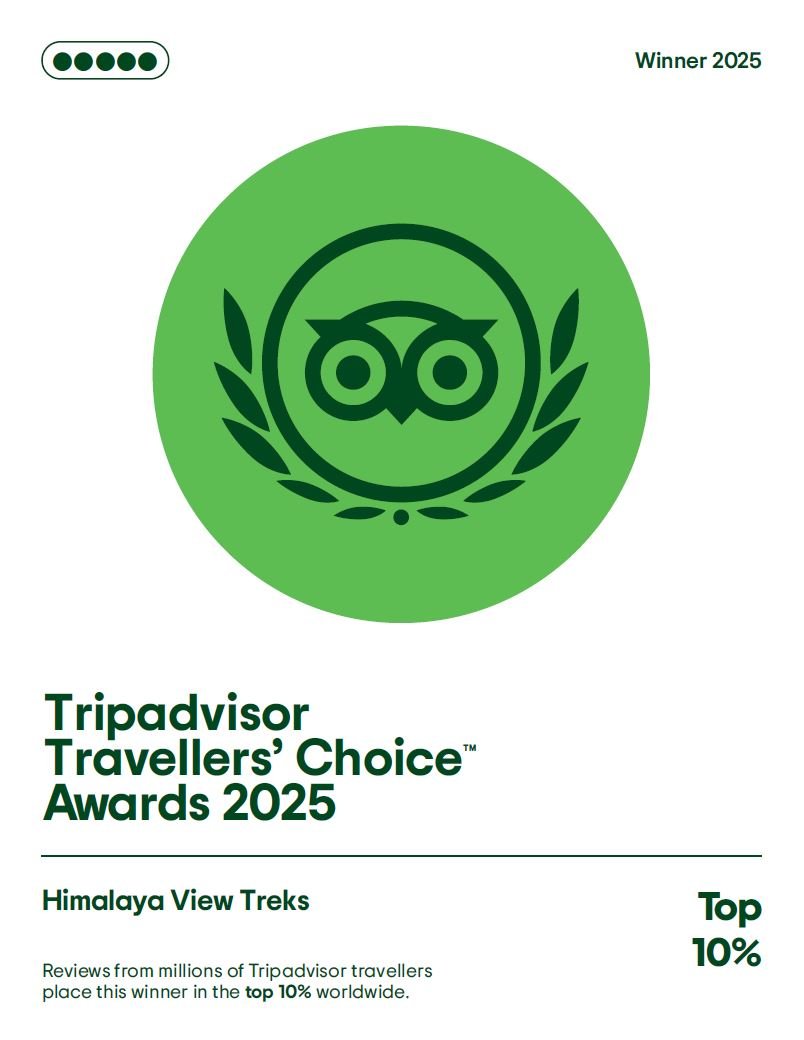Trip overview
Everest Base Camp Trek 12 Days
The Everest base camp trek 12 Days with Himalaya View Treks trip route Itinerary gives you the feel of a legend close to Sir Edmund Hillary. The sky above the earth below. Hiking the trails & peace within. This is what (5364m.) the Everest base camp trek is all about…
The journey of Everest Base Camp in Nepal never fails to provide splendid walking holiday experiences. It is the destination where one can knit a Himalayan wilderness experience in the lap of the world’s tallest mountain Mt. Everest. Himalaya View Treks is a reliable trekking agency that operates trekking trips by experts and highly experienced Local Sherpa guides and Strong Porters to Everest Base camp
Why Choose the Everest Base Camp Trek 12 Days?
5 reason of to do Everest trek, Nepal Mount Everest base camp path is said to be the king of all walkers’ holidays on earth. In other words, doing EBC is similar to a feat once done by a legendary mountain climber, Sir Edmund Hillary. Your average cost of EBC Nepal treks is so much more worth the trip—5364 m. The Everest base camp trek 12-day trip Itinerary offers adventure lovers worldwide a chance to reach the Base of Everest comfortably. Our way of operating trekking tours will help both novice and veteran trekkers. Himalaya View Treks employ a scientific itinerary-making method so that all age group of people can fulfill their dream of leaving footprints at Everest Base Camp. plan your next study once a lifetime experience.
HIMALAYA VIEW TREKS Everest base camp trek altitude in Nepal allows better acclimatization to help you feel good. This is the key to any successful trekking in the Everest region. Moreover, you can chat and learn about the brave Sherpa people & their lifestyles. Our trail goes through the famous villages of Namche and Khumjung. Furthermore, visiting the Tyangboche monastery also echoes the famous Sherpa culture. Gorakshep is the last camp of the 12-day Everest Base Camp trek , and elevation of Gorakshep is 5160m from sea level. From Gorakshep, you can hike to Kalapatthar at 5545m. and Everest Base Camp at 5364m. in same day.
Incredible eye catching view of Mount Everest from Kala Patthar
The Kala Patthar is the Highest point of 12 days Everest Base Camp Trek, Elevation of Kala Patthar is 5545m. You will able to see closer and Incredible eye catching views of Mt. Everest top and surrounding peaks from Kalapatthar. And, Everest base camp (EBC) is 5364m. from the sea level. However, the Wonderful Journey to Everest base Camp within Pasang Lhamu rural Municipality of the Sherpa Kingdom Khumbu Nepal includes ascents to Kala Patthar peak at (5545m), via Khumbu Glacier an important highlight of the 12-day EBC route. Namche Bazzar is the Main gateway to Everest base camp and Everest region treks.
For instance, you will see some world-famous peaks from the breathtaking point. These peaks include Mt. Lhotse Nuptse, Pumori, Thamserku, Everest south Col, Amadablam & Mount Everest, from a real close-up. Likewise, we also get to view classic climbing routes to the summit of Mount Everest. Further on the cards is a hike to Everest Base Camp from where expeditions prepare to climb the world’s highest peak.
Similarly, the best is yet to come. We enjoy stunning sunrise and sunset views over grand peaks, causing our hearts to dance with emotions. These are some major highlights of our EBC Trip of 12 days. Although, HVT EBC trekking itinerary gives you some of the best experiences, ever.
Get ready to write a legendary travel story about your journey in Nepal. Share it with your loved ones when you return Trek from Everest Base Camp.
Moreover, the Superb Trek to Everest Base Camp journey begins with a short flight to Lukla airport from Kathmandu, a lovely Sherpa Kingdom of Khumbu Valley. After landing at Lukla, trekkers will meet the rest of the crew members. The route passes through the little town of Phakding to reach the Khumbu capital of Namche Bazaar. From here on, we enter the striking Sagarmatha National Park Entry Point (the World’s highest national park). We do a steep hike up to the Everest View Hotel to acclimatize. From the vantage point of this popular hotel, we get our first views of some of the highest peaks on earth. the best time of the year, Spring season Mar / April / May and Autumn season Sep/ Oct / Nov. special offer for 2026/ 2027.
At the end of it all, Himalaya View Treks Everest Base Camp tour package 12 Days concludes after we reach the peak of Kalapathar at 5545m. We then trace our steps back to Namche Bazaar for a deserving restful night. The next morning we walk down to Lukla for our flight back to Kathmandu.
Short Itinerary
Everest Base Camp Trek 12 Days Itinerary
Day 01 Fly to Lukla and then trek to Phakding walking distance of 6.2 km (3-4 Hours) 2,860 meters/9184ft
Day 02: Phakding to Namche Bazaar walking distance is 7.4 km (5-6 Hours) 3,440m/11,283ft
Day 03: Acclimatization Day, Hike to Everest View Hotel 3880m/13000ft, and then back to Namche
Day 04: Namche to Tengboche walking distance 5.9 km (6 hours) 3,870m/12,684ft
Day 05: Tengboche to Dingboche walking Distance 9.1km (6 hours) 4,400m/14,435ft
Day 06 Dingboche Acclimatization Day, climbing the (5100 m) hill of Nagarshan (2/3 Hours) 4,400m/14,435ft and then back to Hotel
Day 07: Dingboche to Lobuche Walking distance 10 km (6-7 hours) 4,900m/16,076ft
Day 08: Lobuche to Gorakshep 4 km (6-8 hours) 5180m/16,994ft (Gorekshep) and then hiking Everest base camp 5364m/17598 Via Khumbu Glacier)
Day 09: Hike to Kalapatthar and then trek back to Pheriche walking distance 9.8 km (5-6 hours)5,545m/18,192ft (Kalapathar) & 4,320m/14,173ft (Pheriche)
Day 10: Pheriche to Namche Walking Distance 14.2 km (5-6 hours) 3440m/11285ft
Day 11: Namche to Lukla Walking Distance 13.5 km (5-6 hours) 2,800 m 9,100 ft
Day 12: We will fly back from Lukla to Kathmandu (1300 m). 30 minutes.
Included
- Airport pickup and drop as per the client’s arrival and departure time
- Hotel- domestic airport- hotel by car/ van, depending on group sizes
- Domestic flights (Kathmandu - Lukla - Kathmandu) tickets including airport taxes
- All meals (Breakfast, lunch, and dinner) during your Everest base camp Trek
- 11 nights of Hotel Accommodation during the EBC Trek
- Government licensed holder, fluent English Speaking, Familiar HVT Leader guide
- Strong local Porters for Carry trekker’s luggage One porter every 2 trekkers
- Guide and Porter wages including their meals, accommodation, and Salary
- Staff insurance including medication coverage
- Assistant guide if the Group size is more than 10 trekkers)
- Guide and e Assistance both ways Lukla flight Ticket
- Water purification drops or tablets for safe drinking water
- Sagarmatha National Park entry permit fee
- Khumbu Pasang Lhamu Rural Municipality Permit fees
- Trekker’s information management system (TIM’s card)
- Seasonal fresh fruits every day during your Everest Base Camp trek
- Oximeter to measure Pulse and oxygen level
- Himalaya View Treks Company T-shirt as a Souvenirs and duffel bag if you needed
- Safe storing facilities at company store during the trek
- Local government, taxes, including official Service Charge
- Trip completion Certificate if you
Not Included
- Hotel accommodation and meals In Kathmandu
- Personal expenses (shopping, snacks, boil bottled water, hot (tea, coffee) and cold drinks, hot shower, alcohol, Wi-Fi, telephone call, battery charge fee during the Everest base camp Trek)
- Personal clothing and trekking gear
- Sleeping bag and down jacket available for rent in our store
- Personal travel insurance including evacuation coverage (compulsory) up to 6000m)
- Additional costs if delays flights and outside the itinerary
- Tips for Guide and Porters at the end of the treks
Useful Info
Everest Base Camp Trek (EBC) – Key Highlights
- Trek to the iconic Everest Base Camp (5,364m) with support from our experienced team of local guides, crew, and porters who truly love what they do.
- Climb Kala Patthar (5,545m) for breathtaking panoramic views of Mt. Everest (8,848m), Lhotse, Nuptse, and the surrounding Himalayan peaks – some of the best sights in the world.
- Experience the thrilling mountain flight to Tenzing-Hillary Airport, Lukla (138 km, flight duration 30–40 minutes from Kathmandu).
- Immerse yourself in the vibrant culture of ancient Kathmandu with optional sightseeing.
- Visit the largest monastery in the Khumbu region – Tengboche Monastery (3,867m).
- Spend a night at the world’s highest hotel in Gorakshep (5,164m / 16,942ft).
- Test your adrenaline at the Everest Highest Bungee from the Hillary Suspension Bridge.
- Explore the traditional Sherpa village of Khumjung and visit Khumjung Monastery, home to the famous Yeti Skull.
- Discover Sherpa culture and history at the Sherpa Museum in Namche Bazaar, featuring rare photography collections of Everest summiteers.
- Witness the 17km-long Khumbu Glacier and the dramatic Khumbu Icefall.
- Visit both the new and old Everest Base Camps.
- Experience the warmth and hospitality of the Sherpa people, learning about their lifestyle and traditions in one of the world’s harshest environments.
- Trekking distance: Lukla – Everest Base Camp – Lukla, approx. 130 km (round trip), taking 8–11 days on average.
Is Everest Base Camp Trek Your Ideal Adventure?
Trekking in the Everest region is all about attitude. Adventure travel means being prepared for the unexpected. Remote areas can be unpredictable, and itineraries may change. To fully enjoy your EBC journey, you must be flexible, positive, and open to challenges.
If you’re new to high-altitude trekking, this trek can still be ideal for you. You should be prepared to walk 4–6 hours daily (with some longer days). Walking at your own comfortable pace without rushing is the key. With good fitness and a love for the outdoors, you can make this classic trek to the southern face of Everest a once-in-a-lifetime experience.
General Information
Difficulty Level – Trekking at High Altitudes (Above 3,500m)
This trek involves strenuous hiking above 3,500m. Altitude is a serious issue, and we design itineraries to minimize risk. All participants should be in good health, physically fit, and committed to pre-trek training.
Altitude sickness can affect anyone. Familiarize yourself with the symptoms, and monitor your health closely. Our guides are trained in first aid and will ensure your safety. If needed, helicopter evacuation is always available.
Group & Solo Travel Options
- Group Travel: Expect a mix of travelers from around the world and across age groups. Group chemistry is important, and patience/flexibility make for the best experiences.
- Solo Travelers: Standard treks are based on shared accommodation (same gender). Private rooms may be available with a supplement. We also organize fully private treks for those who prefer to travel solo.
Travel Insurance
It is mandatory to have travel insurance that covers helicopter rescue, medical treatment, and emergencies. Please arrange this from your home country.
Costs & Value
At Himalaya View Treks, we focus on maximum safety, comfort, and authentic experiences at a fair cost. Our transparent pricing ensures you know exactly what you are paying for.
Tipping Guidelines
Tipping is customary in Nepal. Suggested group contributions (per staff member):
- Tour Leader: NPR 30,000 – 35,000
- Trekking Guide/Assistant Guides: NPR 20,000 – 25,000 each
- Porters/Yak Men: NPR 10,000 each
Acute Mountain Sickness (AMS)
Symptoms may include headache, fatigue, nausea, shortness of breath, or disturbed sleep. These are common at high altitudes. The best prevention is slow acclimatization, hydration, and communication with your guide. The only cure is descent.
A Typical Day on the Trail
- 6:00 AM: Wake-up call.
- 7:00 AM: Breakfast.
- 7:30 AM: Start trekking with short breaks and photo stops.
- 12:00 PM: Lunch at a teahouse.
- 3:00–4:00 PM: Arrival at overnight stop.
- 5:00 PM: Tea and snacks.
- 7:00 PM: Dinner, followed by a briefing about the next day.
- 9:00 PM: Rest for the night.
Average trekking: 6–7 hours daily. Shortest day: Lukla to Phakding. Toughest day: Lobuche to EBC. Sunrise hike to Kala Patthar begins before 4 AM.
Equipment Checklist (Essential Items)
- Footwear: Trekking boots, casual shoes, warm socks, gaiters.
- Clothing: Trekking trousers, thermal leggings, T-shirts, fleece, waterproof jacket, down jacket (rentable in Kathmandu).
- Head/Hands: Warm hat, sun hat, sunglasses, gloves.
- Gear: Rucksack, daypack, sleeping bag, torch, water bottle, first aid kit, toiletries.
- Optional: Binoculars, books, cards, altimeter.
Above all: bring humor, flexibility, and an adventurous spirit.
Permits Required
- Khumbu Pasang Lhamu Rural Municipality
- Sagarmatha National Park Entry:
- TIMS Card:
Things to Remember Before EBC Trek
- Insurance: Must cover rescue & medical emergencies.
- Physical Preparation: Cardio training (running, swimming, cycling) at least 1 month before.
- Permits: Organized by your agency.
- Best Seasons: Spring (Mar–May) and Autumn (Sep–Nov).
- Lukla Flights: During peak season, flights may operate from Ramechhap (4–5 hrs drive from Kathmandu).
- Reserve Day: Keep one extra day for weather delays.
- Food & Accommodation: Wide variety available – from local teahouses to luxury lodges.
Are You Already in Nepal?
If you are already in Kathmandu or Pokhara and want to hire a guide/porter or book trekking packages, you can directly contact us: WhatsApp: +977 9841146306
Office: Himalaya View Treks, Kaldhara Marg, Kathmandu 44600
(Located opposite the Kathmandu Sport Climbing Center, 1st Floor)
FAQs
-
The weather forecast says rain/clouds/snow in Lukla on our Flight Day. Are we in for a rough flight?
When you are up on the mountains in Nepal, we would suggest you be ready for anything. You’re about to trek on some of the most rugged territory on earth, despite its extraordinary beauty. Weather forecasts for Lukla are never correct and different sources will give you different information. If it is a really bad day in terms of weather, the airlines will themselves cancel the flight and you might have to wait till the weather clears. Yes, flying in high altitude is never easy, even on a clear sunny day; the plane might face turbulence because of the wind blowing from the mountains. But overall the flight to Lukla is very exciting and it’s an experience that you will never forget.
-
What temperatures can you expect at the EBC during spring and autumn?
These are the best months to do this trek, as the weather is mild and the temperatures range from 12 to 15 degrees. The skies generally remain clear and the days are pleasant and warm. You can expect an occasional spring shower and hazy weather during spring. The mountain views are stunning in September, as there is more snow on the mountains. Nights can be freezing as the temperature dips after sun down.
-
How much do you reckon I will need to spend on the trail per day?
If you have booked a package with us you won’t be spending much as accommodation and 3 meals are already included in your trip price. You may have to personally pay for items like beverages and drinks, extra snacks, hot showers, electronic device charging, wifi etc. USD 20 to 30 (NRS 2000-3000) per day will be more than enough you may need to spend in a day.
-
What do you recommend for water along the Everest Base Camp Trek?
You can either buy bottled mineral water or fill up a reusable water bottle with boiled or sterilized water. During the trek, the teahouses or lodges serve you bottled and filtered water which is generally safe and has to be paid for. A liter of water would cost anything between 1 to 4 USD. As you go higher the cost of all commodities, including water, increases. But do note there is no dearth or scarcity of drinking water at teahouses. We encourage our guest to use iodine and other purifying agents to treat the water before drinking. You need to drink at least 3-4 litres of water each day to stay hydrated at higher altitudes. Keeping your body hydrated helps you to keep away the symptoms of altitude sickness. Please note, the company doesn’t provide drinking water or any extra drinks or beverages other than the ones that are specified in the trip cost.
-
How much tips should I give to the guide, porter and driver?
While tipping is not mandatory it is a nice way of showing your appreciation to the people who have helped you enrich your holiday experience. It all depends on how far you are pleased and satisfied with their services. There is no fixed amount, but many of our clients offer 8-10 percent of the total tour price as tips.
-
Is it hard to climb Everest Base Camp?
You need to be in good shape and have an ability to walk 6–7 hours uphill and downhill per day. This trek is suitable for passionate trekkers. Positive attitude, excellent health, and strong determination are required for be successful on a trip of this kind. Past hiking experience would be an asset but no technical skill is required for this trip. Besides, it is advisable to trek with a highly reputed trek operator who knows what it’s like in this part of the world, with experienced guides who can help you with significant mental preparation to keep you going all the way, as tough as it gets. Regarding the difficulty, the only challenging factor is the altitude. Our Everest Base Camp trek itinerary provides ample time for acclimatization. Neither ropes nor ice picks are needed for this trip and no vertical climbs are involved. Greenhorns in good physical shape, who exercise regularly, has positive attitude and has healthy heart and lungs can easily complete this adventurous trip.
-
How long do we stay at Everest Base Camp? Can we spend the night at the Base Camp?
As Everest Base Camp is situated at a high altitude of 5,364 metres, you spend only 1 to 2 hours at the camp. Since the base camp lies at the foot of the world’s tallest mountain Mount Everest, the hike to EBC is probably the highlight of your trek. Though one cannot view the summit of Mount Everest from the base camp (as the mountain is too huge) you can get close up views of the massive walls of Everest, Khumbutse, Lingtren and Nuptse. The Khumbu Icefall appears spectacular. Though the icefall lies close to the Base Camp, it is not possible to explore it as you need proper climbing gear to walk on it. But you get to explore the actual base camp of the Everest expedition groups. During climbing season, it is like a mini city of tents and you get to meet mountaineers (sometimes celebrities too!) from different countries attempting to summit Mount Everest. After taking pictures and soaking in the magnificent views you descend down to Gorak Shep again. Please do note the visibility of mountains depends on the weather. If it’s foggy you may not get good views of the mountains. No, we do not spend the night at Everest Base Camp as there are no teahouses or lodges there. Moreover it is advisable and more comfortable to spend the night at a lower elevation. After enjoying the views we trek down to Gorak Shep and stay overnight at a local teahouse.
-
Can you see the summit of Mount Everest from Everest Base Camp?
No, the summit of Mount Everest is not visible from Everest Base Camp. Rising above 8000 metres, the mountain is just too gigantic to be viewed in its entirety from its base. The summit of Everest can be viewed from Kalapathar and from places en route to EBC. If you want to view Mount Everest without having to trek to Everest region, you can do it by driving to Nagarkot, taking an Everest Mountain Flight and an Everest Base Camp Helicopter Tour. The best views you get of Mount Everest is from Kalapathar. It leaves you breathless, virtually!
-
What sort of toilet facilities will be available on the Everest Trek?
In all our Everest Treks the teahouses that we use have western toilets. In luxury lodges and teahouses in the lower elevations the rooms come with attached bathrooms and hot showers. At higher elevations the facilities may be a bit basic and you may have to share the bathroom with other travellers. Please do note that in case of extreme cold, the water in the toilet basin may freeze and you may have to use an Asian (also known as ‘squat’) style of toilet that is located outside. Please do carry toilet paper rolls with you at all times. It is important that you carry enough rolls of toilet paper and hand sanitizers while trekking. Can I make payment with my credit card or with my cash while Everest trekking? You need to have local currency to purchase items on the trail. While Lukla and Namche in the Everest Region may have lodges that would accept payment with cards, we strongly advise to carry enough local cash with you to buy essential items en route. You can exchange your currency at any of the money exchange centres in Kathmandu or use your credit or debit card at the local ATMs to get local currency.
-
Where can I store my extra luggage while trekking?
You can store it at your hotel (most hotels in Kathmandu have storage facilities) or you can leave it at our office.
-
Is there WIFI available on the Everest Base Camp trail?
Yes, wifi hotspots are available on the Everest Base Camp trail. But please do keep in mind, due to the mountainous terrain the network maybe erratic sometimes. Often times the signal gets lost or the strength is poor.
-
How far Everest base Camp from Gorakshep?
Depends on your pace. Normally 2-3 hours from Gorakshep and both ascend and descend 4 hours.
-
How to Book Everest Base Camp Trek?
If you are pondering to Book Everest Base camp trek then it is easy to book, click Book Trip bottom and fill up the form, totally hassle free.

